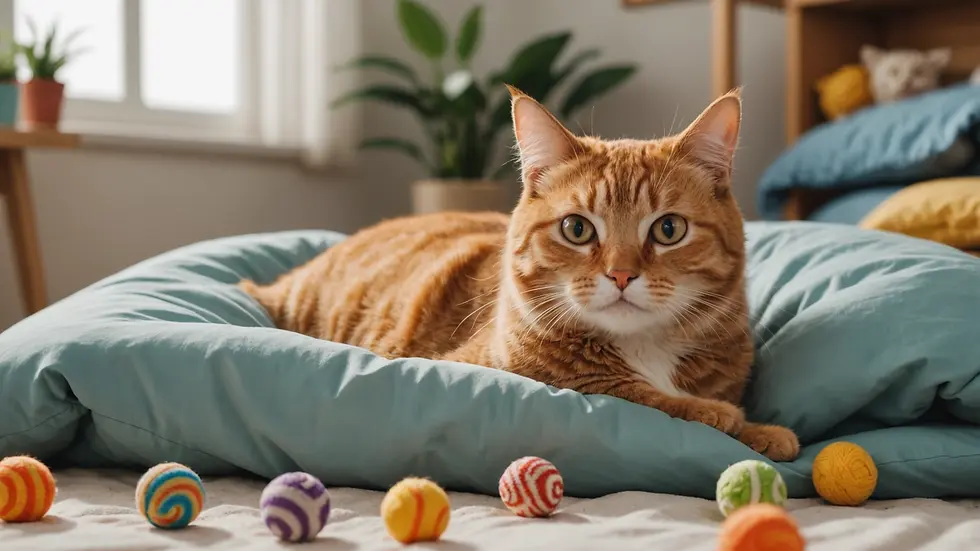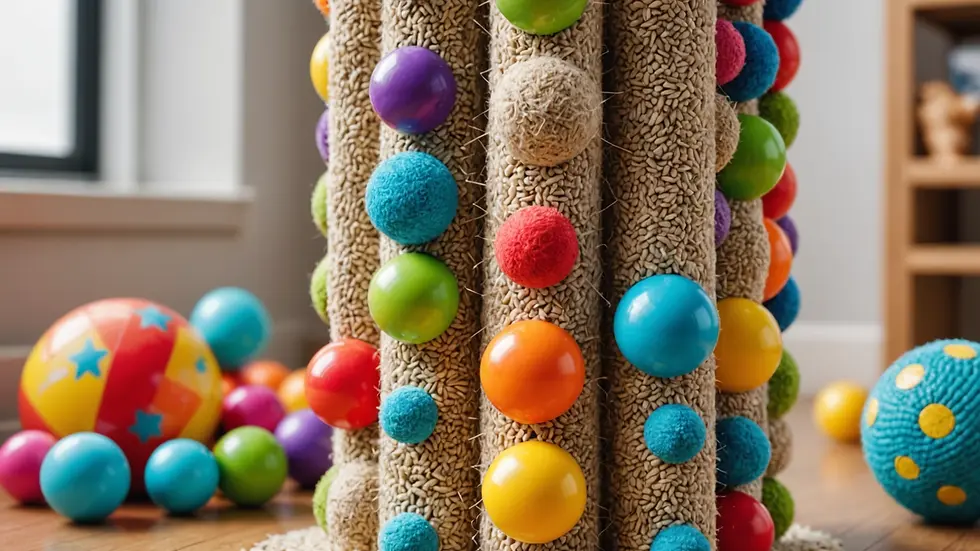Uncovering the Secrets of Socializing a Cat: A Surprising Approach
- Jyotiraj Borah
- Feb 6
- 5 min read
Socializing a cat can feel overwhelming, particularly if they have had little exposure to people or diverse experiences. However, with the right methods and a lot of patience, even the most timid cats can learn to navigate their social environment with confidence. In this blog post, we will explore effective techniques to help your cat become a more social and trusting companion.
Understanding Cat Behavior
Before we jump into socialization techniques, it's crucial to grasp basic cat behavior. Cats are instinctively solitary, deriving from ancestors that thrived in isolated habitats. This natural inclination may result in shyness, anxiety, and a tendency to avoid new interactions.
Being able to identify stress signals in your cat is essential. Signs include flattened ears, a twitching tail, hiding, or hissing. For instance, a study by the Journal of Feline Medicine and Surgery found that 70% of cats display stress-related behaviors when faced with unfamiliar circumstances. By paying close attention to your cat’s body language, you can adjust your approach and foster a sense of security.
Creating a Safe Environment
Creating a safe and comfortable haven for your cat is one of the first steps in socialization. A secure environment allows them to explore and engage with the world without fear.
Designating a Personal Space
Start by providing a space your cat can retreat to when feeling anxious. This could be a cozy bed in a quiet room or a box filled with soft bedding where they feel secure. A survey conducted by the Cat Behavior Alliance revealed that 92% of cat owners found that creating a designated safe space improved their cat’s overall comfort level.
Setting the Temperature
Cats are sensitive to temperature shifts. Keep their living area at a comfortable level since extreme temperatures can lead to irritability. For example, maintaining a room temperature between 68°F and 72°F is generally ideal for most cats. A stable environment can positively affect their mood, making them more likely to engage socially.

Gradual Introduction to New Experiences
After establishing a secure space, it’s time to gradually introduce your cat to new experiences. Cats often prefer to get accustomed to one thing at a time rather than feeling overwhelmed by multiple stimuli.
Starting with Calm Interactions
When it comes to meeting new people, invite friends or family over in small groups. Encourage them to remain calm and quiet, avoiding any direct attempts to pet the cat initially. A study shows that cats are more likely to approach people who sit quietly and respect their space, increasing the likelihood of positive social interactions.
Utilizing Treats
Use treats to promote positive experiences during interactions. Offering treats when your cat is exploring or approaching will help connect socializing with pleasant outcomes. For example, if your cat approaches a guest, give a small treat and praise them. This can lead to a 50% increase in their willingness to engage over time.
Incorporating Toys
Interactive toys are a great way to foster socialization. Spend time playing with your cat using feather wands or laser pointers. This shared activity encourages companionship and can bridge the gap in social interactions. Anecdotal evidence from cat owners suggests that regular play sessions can enhance their cat's confidence significantly.

Understanding the Importance of Play
Playtime is essential for a cat's social development. Engaging your cat in play not only boosts their confidence but also mimics real-life hunting and social interactions in a safe manner.
Structured Play Sessions
Incorporate structured play sessions into your daily routine. For instance, try spending 15 minutes daily using toys that simulate hunting. This shared experience can reduce feelings of isolation and increase your cat’s willingness to socialize.
Introducing Other Pets
If you have other pets, their interactions can shape your cat's social behavior. Begin by allowing your cat to observe other pets from a safe distance. Gradually bring them closer as they become more comfortable. Monitoring these interactions is vital, as this ensures that they can set boundaries.
Respecting Your Cat's Pace
Remember, every cat is different, and socializing should not be rushed. It's essential to respect their unique comfort levels throughout the process.
Signs of Distress
If your cat displays signs of distress, like hiding or growling, it’s time to pull back. Reassess your methods and allow your cat to re-engage at their own pace. Recognizing these signals can strengthen your bond and boost their confidence.
Creating Positive Associations
Aim to create positive associations during interactions. Use a gentle voice and avoid sudden movements when approaching your cat. Over time, they will associate you and new environments with safety and comfort.
The Role of Consistency
Consistency plays a pivotal role in successful cat socialization. Establishing a routine can help your cat anticipate social activities and build trust.
Daily Interactions
Incorporate daily interactions into your routine, such as designated playtime or quiet bonding sessions. Setting aside even a few minutes each day for gentle petting or sitting quietly with your cat can enhance their comfort with you.
Schedules for Feeding and Play
Establishing a schedule for feeding and playtime helps your cat develop a sense of security. Cats thrive on routine, and research shows that having a predictable environment can reduce anxiety in 75% of cats.
Understanding the Role of Age
A cat's age can significantly influence their willingness to socialize. Kittens are typically more adaptable and curious, whereas older cats may be more set in their ways.
Socializing Kittens
For kittens, socialization is often straightforward. These young cats are eager to explore. Introducing them to various people and experiences early on can be beneficial. According to the American Association of Feline Practitioners, socializing kittens between 2 and 9 weeks old can lead to better-adjusted adults.
Working with Adult Cats
On the other hand, adult cats may require more time and patience. For them, gradual exposure to new situations and a modified routine are essential. Research indicates that adult cats exposed to varied environments may improve their social skills by 40% over time.
Utilizing Professional Help
In some cases, socializing can be particularly challenging. If you’re facing difficulties, consider consulting a professional animal behaviorist or trainer.
Personalized Approaches
Professionals can provide tailored strategies that suit your cat’s unique personality and needs. They aid in enhancing your understanding of normal feline behavior, giving you tools to help guide your cat’s social journey effectively.
Group Classes
Enrolling your cat in supervised playgroups can also be helpful. These environments offer controlled exposures to other cats and people, facilitating their adjustment and socialization.
The Social Journey Ahead
Socializing a cat is a journey that requires time, patience, and an awareness of feline behaviors. By creating a secure environment, gradually introducing new experiences, respecting their comfort levels, and maintaining consistency, you can help your cat emerge as a more confident social being.
Always remember that each cat is different, and prioritizing their comfort and happiness should guide your approach. With dedication and care, a once-shy feline can blossom into a loving and sociable companion. Embrace this journey together, and enjoy the rewarding bond that develops from your shared experiences.




Comments